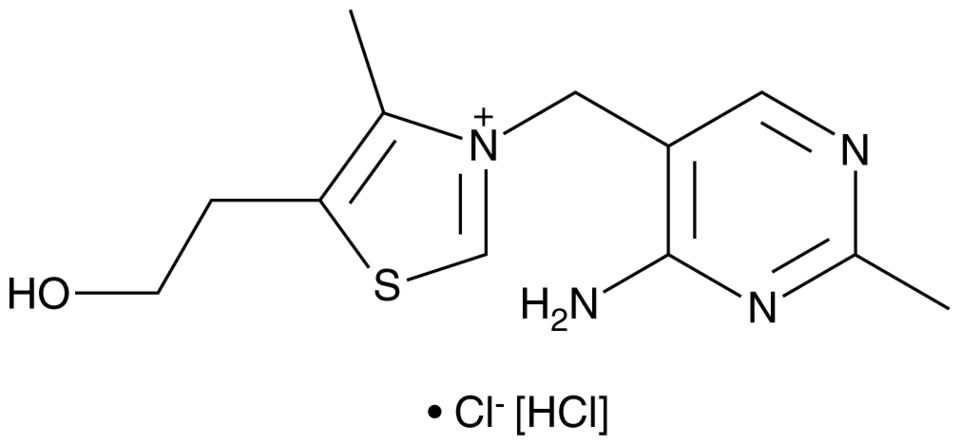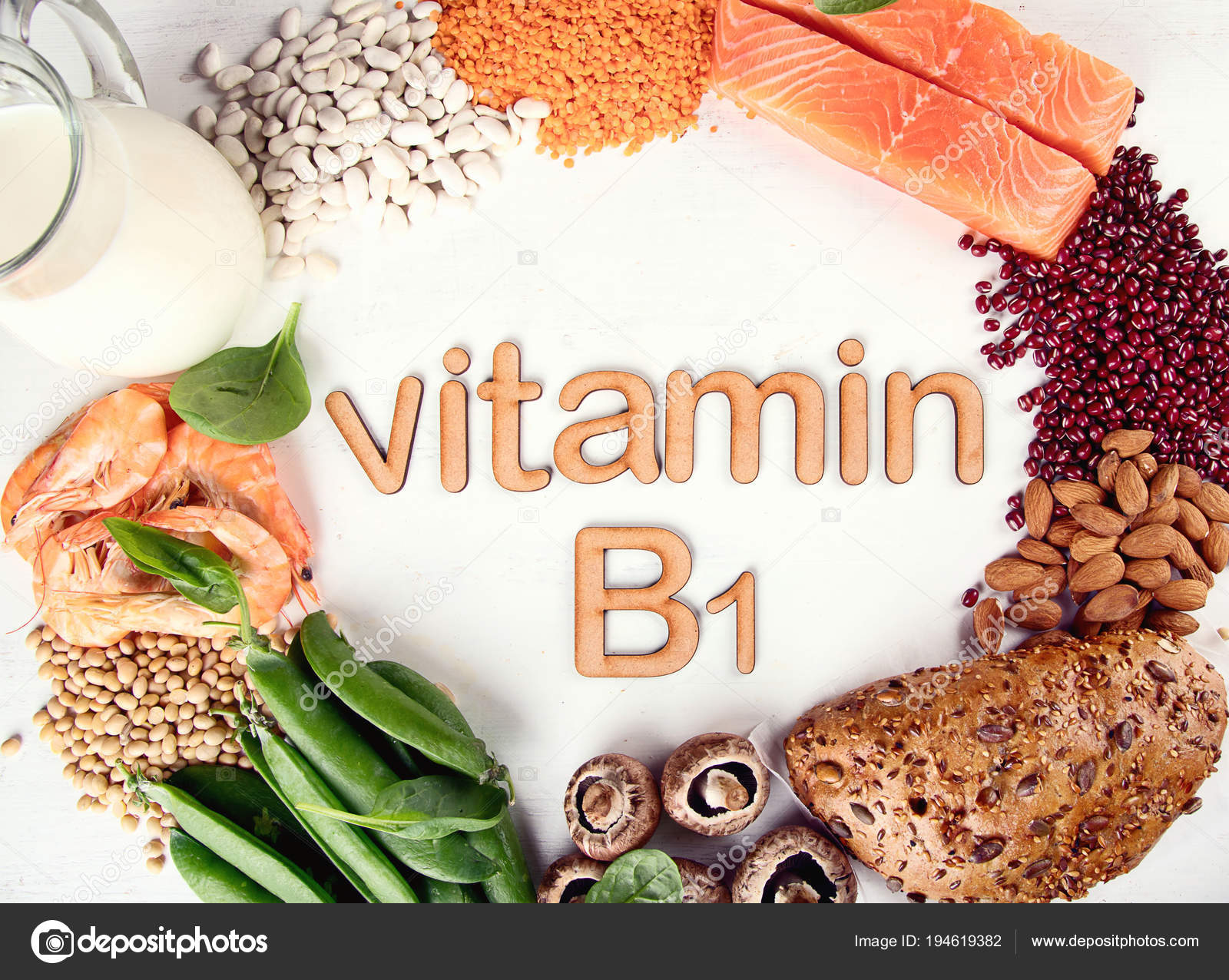Thiamine : Thiamine Status In Humans And Content Of Phosphorylated Thiamine Derivatives In Biopsies And Cultured Cells : Thiamin is naturally present in some foods, added to some food products, and available as a dietary supplement.
Thiamine : Thiamine Status In Humans And Content Of Phosphorylated Thiamine Derivatives In Biopsies And Cultured Cells : Thiamin is naturally present in some foods, added to some food products, and available as a dietary supplement.. Thiamin is naturally present in some foods, added to some food products, and available as a dietary supplement. Food sources of thiamine include whole grains, legumes, and some meats and fish. Thiamine is used to treat or prevent vitamin b1 deficiency. Thiamine is important in the breakdown of carbohydrates from foods into products needed by the body. This vitamin plays a critical role in energy metabolism and, therefore, in the growth, development, and function of cells 1 .
Grain processing removes much of the thiamine content, so in many countries cereals and flours are enriched with thiamine. Jan 11, 2021 · thiamine deficiency is associated with a wide variety of symptoms, depending on the type of thiamine deficiency. Thiamine is a vitamin, also called vitamin b1. Vitamin b1 is found in many foods including yeast, cereal grains, beans, nuts, and meat. Thiamine is important in the breakdown of carbohydrates from foods into products needed by the body.

In one type of deficiency, known as wet beriberi, symptoms are similar to those of congestive heart failure.they include difficulty breathing with exercise or exertion or when lying down, and swelling in the legs.
In one type of deficiency, known as wet beriberi, symptoms are similar to those of congestive heart failure.they include difficulty breathing with exercise or exertion or when lying down, and swelling in the legs. Food sources of thiamine include whole grains, legumes, and some meats and fish. Thiamine is a vitamin, also called vitamin b1. Thiamine is important in the breakdown of carbohydrates from foods into products needed by the body. Thiamine foods include nutritional yeast, sea vegetables, certain whole grains, green veggies like asparagus and peas, seeds, beans, and fish. Vitamin b1 is found in many foods including yeast, cereal grains, beans, nuts, and meat. It is also known as vitamin b1. Most people get enough thiamin from the food they eat. Supplements and medications are available to treat and. Foods rich in thiamin include yeast, legumes, pork, brown rice, as well as fortified foods, such as breakfast cereals. This vitamin plays a critical role in energy metabolism and, therefore, in the growth, development, and function of cells 1 . Also known as thiamine, thiamin is necessary for the growth, development and function of cells. Thiamin is naturally present in some foods, added to some food products, and available as a dietary supplement.
Most people get enough thiamin from the food they eat. Vitamin b1 is found in many foods including yeast, cereal grains, beans, nuts, and meat. In one type of deficiency, known as wet beriberi, symptoms are similar to those of congestive heart failure.they include difficulty breathing with exercise or exertion or when lying down, and swelling in the legs. Jan 11, 2021 · thiamine deficiency is associated with a wide variety of symptoms, depending on the type of thiamine deficiency. Thiamine is a vitamin, also called vitamin b1.
It is often used in combination with other b vitamins, and.
Grain processing removes much of the thiamine content, so in many countries cereals and flours are enriched with thiamine. Also known as thiamine, thiamin is necessary for the growth, development and function of cells. May 18, 2018 · one common early symptom of thiamine deficiency is a loss of appetite, or anorexia. Most people get enough thiamin from the food they eat. Thiamine foods include nutritional yeast, sea vegetables, certain whole grains, green veggies like asparagus and peas, seeds, beans, and fish. Supplements and medications are available to treat and. This vitamin plays a critical role in energy metabolism and, therefore, in the growth, development, and function of cells 1 . Thiamin is naturally present in some foods, added to some food products, and available as a dietary supplement. In one type of deficiency, known as wet beriberi, symptoms are similar to those of congestive heart failure.they include difficulty breathing with exercise or exertion or when lying down, and swelling in the legs. Thiamine is used to treat or prevent vitamin b1 deficiency. Thiamine is taken for conditions related to low levels of thiamine, including beriberi and inflammation of the nerves associated with pellagra or pregnancy. Thiamine injection is used to treat beriberi, a serious condition caused by prolonged lack of. Jan 11, 2021 · thiamine deficiency is associated with a wide variety of symptoms, depending on the type of thiamine deficiency.
Scientists believe that thiamine plays an important role in the regulation of satiety. Thiamine injection is used to treat beriberi, a serious condition caused by prolonged lack of. May 18, 2018 · one common early symptom of thiamine deficiency is a loss of appetite, or anorexia. Thiamine foods include nutritional yeast, sea vegetables, certain whole grains, green veggies like asparagus and peas, seeds, beans, and fish. It is also known as vitamin b1.

Thiamine injection is used to treat beriberi, a serious condition caused by prolonged lack of.
Thiamine is important in the breakdown of carbohydrates from foods into products needed by the body. Grain processing removes much of the thiamine content, so in many countries cereals and flours are enriched with thiamine. Thiamine is taken for conditions related to low levels of thiamine, including beriberi and inflammation of the nerves associated with pellagra or pregnancy. Food sources of thiamine include whole grains, legumes, and some meats and fish. May 18, 2018 · one common early symptom of thiamine deficiency is a loss of appetite, or anorexia. Foods rich in thiamin include yeast, legumes, pork, brown rice, as well as fortified foods, such as breakfast cereals. Scientists believe that thiamine plays an important role in the regulation of satiety. It is also known as vitamin b1. Thiamine is a vitamin, also called vitamin b1. Also known as thiamine, thiamin is necessary for the growth, development and function of cells. Nov 23, 2020 · thiamine is found in foods such as cereals, whole grains, meat, nuts, beans, and peas. Supplements and medications are available to treat and. It is often used in combination with other b vitamins, and.
Thiamine, also known as thiamin or vitamin b 1 , is a vitamin found in food and manufactured as a dietary supplement and medication thiam. Thiamine is taken for conditions related to low levels of thiamine, including beriberi and inflammation of the nerves associated with pellagra or pregnancy.